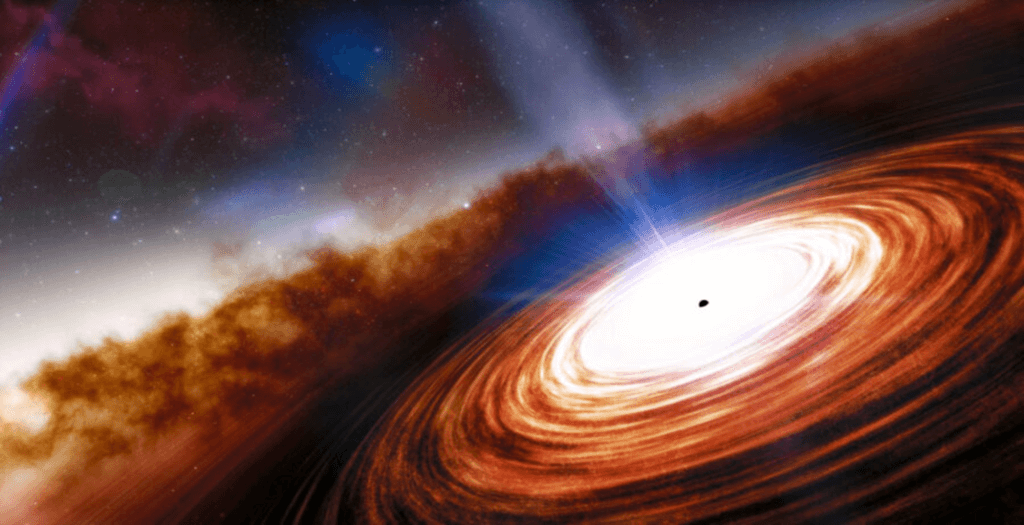A recent study published in the Monthly Notices of the Royal Astronomical Society revealed that the collision of two galaxies likely ignites quasars. The discovery was made using deep imaging observations from the Isaac Newton Telescope in La Palma.
What Are Quasars?
A quasar, also known as a quasi-stellar object (QSO), is an extremely luminous active galactic nucleus (AGN) that was first discovered six decades ago. Quasars are located in supermassive black holes, which sit in the center of galaxies. As a supermassive black hole feeds on gas and dust, it releases extraordinary amounts of energy in the form of radiation, resulting in a quasar. A black hole is a point in space where matter is so compressed that it creates a gravity field from which even light cannot escape.

What Does the Study Say About Quasars?
The study found that quasars are a consequence of galaxies crashing together. Most galaxies have supermassive black holes at their centers, which contain substantial amounts of gas. However, most of the time, this gas is orbiting at large distances from the galaxy centers, out of reach of the black holes. Collisions between galaxies drive the gas towards the black hole at the galaxy center, just before the gas is consumed by the black hole, it releases extraordinary amounts of energy in the form of radiation, resulting in the characteristic quasar brilliance.
The Future Prospects of Galaxies
The ignition of a quasar can have dramatic consequences for entire galaxies as it can drive the rest of the gas out of the galaxy, which prevents it from forming new stars for billions of years into the future. This phenomenon is likely to represent the future of our own Milky Way galaxy when it collides with the Andromeda galaxy in about five billion years.
The Significance of Quasars
Quasars play a key role in our understanding of the history of the universe and possibly also the future of the Milky Way. Quasars act as “cosmic lighthouses,” allowing researchers to see the outer reaches of the universe. NASA’s James Webb Space Telescope will study the earliest galaxies in the universe, and the telescope is capable of detecting light from even the most distant quasars, emitted nearly 13 billion years ago.
Why In News
According to a recent study published in the Monthly Notices of the Royal Astronomical Society, collisions between two galaxies are likely to ignite quasars. The study’s researchers made this discovery by conducting deep imaging observations using the Isaac Newton Telescope in La Palma.
MCQs about Galaxy Collisions Ignite Quasars
-
what is a quasar?
A. An extremely luminous active galactic nucleus (AGN)
B. A planet located in supermassive black holes
C. A type of black hole that emits radiation
D. A star that releases extraordinary amounts of energy
-
What do most galaxies have at their centers?
A. Supermassive black holes
B. Planets
C. Stars
D. Asteroids
-
How do collisions between galaxies drive the gas towards the black hole at the galaxy center?
A. By releasing energy
B. By attracting the gas
C. By compressing the gas
D. By expanding the gas
-
What can the ignition of a quasar do to entire galaxies?
A. Drive the rest of the gas out of the galaxy
B. Increase the amount of gas in the galaxy
C. Form new stars in the galaxy
D. Create a new galaxy
Boost up your confidence by appearing our Weekly Current Affairs Multiple Choice Questions
![]()


